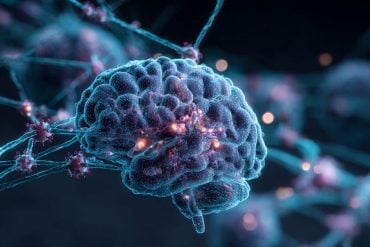Summary: A new study reveals that in girls, symptoms of inattentive-type ADHD significantly increase the likelihood of developing anxiety during adolescence. Inattention and anxiety appear to reinforce each other in girls, but not in boys, where hyperactivity is the more predictive factor.
Researchers emphasize that these findings could improve early diagnosis and intervention for young girls, who are often overlooked due to their quiet or daydreamy demeanor. Early support may prevent later mental health issues, offering a path toward more targeted, sex-specific approaches to ADHD care.
Key Facts:
- Gender Differences: Inattention predicts anxiety in girls, while hyperactivity predicts it in boys.
- Undiagnosed ADHD: Girls with inattentive-type ADHD are often diagnosed late due to subtler symptoms.
- Early Intervention: Identifying inattention before age 12 could prevent anxiety later on.
Source: NTNU
Researchers at the Norwegian University of Science and Technology (NTNU) have found new correlations between ADHD and anxiety, which are two major health issues among adolescents.
The two disorders often co-occur in individuals, and recent findings now reveal that the relationship between them appears to be different in girls and boys.

Apparent differences between girls and boys
There are several types of ADHD, and the researchers’ findings are related to one specific type called the inattentive type. A higher percentage of girls have this type of ADHD. Boys often have a different type of ADHD called the hyperactive-impulsive type. Some people can have both.
“First and foremost, we have identified a link between anxiety and inattentive type ADHD, and we find that this only applies to girls,” said Professor Lars Wichstrøm at the Department of Psychology.
Surprised by major differences
This is the first time researchers have investigated – and demonstrated – that the relationship between ADHD and anxiety differs according to sex, and that it is linked to inattention.
“We assumed there were differences between the sexes, but we did not expect them to be so significant,” said Wichstrøm.
He emphasizes that they have studied inattention as a symptom of ADHD, rather than ADHD as a disorder.
Reciprocal relationship
The two disorders seem to reinforce each other. In girls, the prevalence of inattention increases the likelihood of more severe symptoms of anxiety disorders during childhood and adolescence. In addition, anxiety during adolescence increases the likelihood of the inattention worsening.
The researchers found no such correlation between inattention and anxiety in boys. However, they found that increased hyperactivity-impulsivity in the first few years of school increased the likelihood of developing anxiety.
Earlier detection
Anxiety disorders increase significantly during adolescence, especially for girls. The NTNU study concludes that early detection and effective treatment of inattention symptoms in girls can reduce the risk of anxiety later on in life. Similarly, interventions or treatment for anxiety can reduce the likelihood of attention deficit difficulties becoming more severe in young girls.
It is well known that ADHD and anxiety often co-occur in individuals. According to Wichstrøm, only a small part of this comorbidity can be explained by shared genetics between ADHD and anxiety. We also know that the intensity of ADHD symptoms and anxiety can vary over time.
However, we do not know why this is the case.
Under the radar
On average, 5 per cent of children and adolescents have ADHD, both in Norway and in other countries where this has been studied.
Anxiety increases significantly in children as early as 12 years old. If we can identify inattention problems before that age, possibly as early as 8 years old, we may be able to reduce or prevent them from developing into anxiety.
Girls with inattentive type ADHD are often perceived as shy, introverted, absent-minded and daydreaming – or even lazy. As children, they often go under the radar because they rarely cause any trouble or disturb others.
The only symptom they have is inattention, and it can be difficult to distinguish this from simply being ‘normally’ distracted, disorganized, or forgetful.
Missing out on help
This means that girls often receive the diagnosis later on in life. As a result, they miss out on interventions that might help limit the later development of anxiety, according to Wichstrøm.
Hyperactive-impulsive type ADHD is most prevalent in boys. It is easier to see and hear individuals who struggle with restlessness and hyperactivity, who cannot sit still or wait their turn. Thus, they tend to be identified earlier, receive a diagnosis, and get help more quickly.
Struggle and exclusion
Children who struggle with basic skills can experience exclusion, bullying and other stressful challenges.
“Personal and social challenges can easily lead to rumination, worry, anxiety and catastrophizing. It seems that girls are more vulnerable when they are exposed to negative life events or bullying.
“They are more likely to respond with depression than boys,” explained Wichstrøm, who has done extensive research on anxiety and depression among adolescents.
ADHD is detected through anxiety
Researchers still do not know if there are any common factors underlying and influencing why some individuals develop both anxiety and ADHD. What they do know is that the older an individual is when diagnosed, the more common it is for them to have inattentive type ADHD.
“Generally, as young people approach puberty, the prevalence of anxiety increases significantly – especially among girls, and it is only at that point that their ADHD is also detected,” explained Wichstrøm.
Looking for early signs
The NTNU researchers hope their findings can demonstrate the importance of early detection of ADHD in children.
“Anxiety increases significantly in children as early as 12 years old. If we can identify inattention problems before that age, possibly as young as 8 years old, we may be able to reduce or prevent them from developing into anxiety,” said Wichstrøm.
The NTNU researchers emphasize the need for more knowledge about the intricate connections between sex, ADHD and anxiety. An additional step could be to confirm the findings they have made in an even larger study. Wichstrøm would like to see further research on the very youngest girls.
Helping people with ADHD
Wichstrøm is fully aware of the debate about the overdiagnosis of ADHD. He says it is quite possible that too many people may end up with a diagnosis.
“But we must still strive to actually detect ADHD where it exists and help those who have it,” he said.Studied 1000 children and their parents
The NTNU study is an observational study. It is based on information from 1000 children born in 2003 and 2004 and their parents. The participants have been followed up every other year from the time the children were 4 years old until they turned 18. They are now young adults, turning 22 this autumn.
About this ADHD research news
Author: Lars Wichstrøm
Source: NTNU
Contact: Lars Wichstrøm – NTNU
Image: The image is credited to Neuroscience News
Original Research: Open access.
“Reciprocal relations between dimensions of attention-deficit/hyperactivity and anxiety disorders from preschool age to adolescence: sex differences in a birth cohort sample” by Lars Wichstrøm et al. Journal of Child Psychology and Psychiatry
Abstract
Reciprocal relations between dimensions of attention-deficit/hyperactivity and anxiety disorders from preschool age to adolescence: sex differences in a birth cohort sample
Background
Symptoms of anxiety and attention-deficit/hyperactivity disorder (ADHD) are prospectively related from childhood to adolescence. However, whether the two dimensions of ADHD—inattention and hyperactivity-impulsivity—are differentially related to anxiety and whether there are developmental and sex/gender differences in these relations are unknown.
Methods
Two birth cohorts of Norwegian children were assessed biennially from ages 4 to 16 (N = 1,077; 49% girls) with diagnostic parent interviews used to assess symptoms of anxiety and ADHD. Data were analyzed using a random intercept cross-lagged panel model, adjusting for all unobserved time-invariant confounding effects.
Results
In girls, increased inattention, but not hyperactivity-impulsivity, predicted increased anxiety 2 years later across all time-points and increased anxiety at ages 12 and 14 predicted increased inattention but not hyperactivity-impulsivity. In boys, increased hyperactivity-impulsivity at ages 6 and 8, but not increased inattention, predicted increased anxiety 2 years later, whereas increased anxiety did not predict increased inattention or hyperactivity-impulsivity.
Conclusions
The two ADHD dimensions were differentially related to anxiety, and the relations were sex-specific. In girls, inattention may be involved in the development of anxiety throughout childhood and adolescence and anxiety may contribute to girls developing more inattention beginning in early adolescence. In boys, hyperactivity-impulsivity may be involved in the development of anxiety during the early school years.
Effective treatment of inattention symptoms in girls may reduce anxiety risk at all time-points, while addressing anxiety may decrease inattention during adolescence. Similarly, treating hyperactivity-impulsivity may reduce anxiety risk in boys during late childhood (at ages 8–10).






